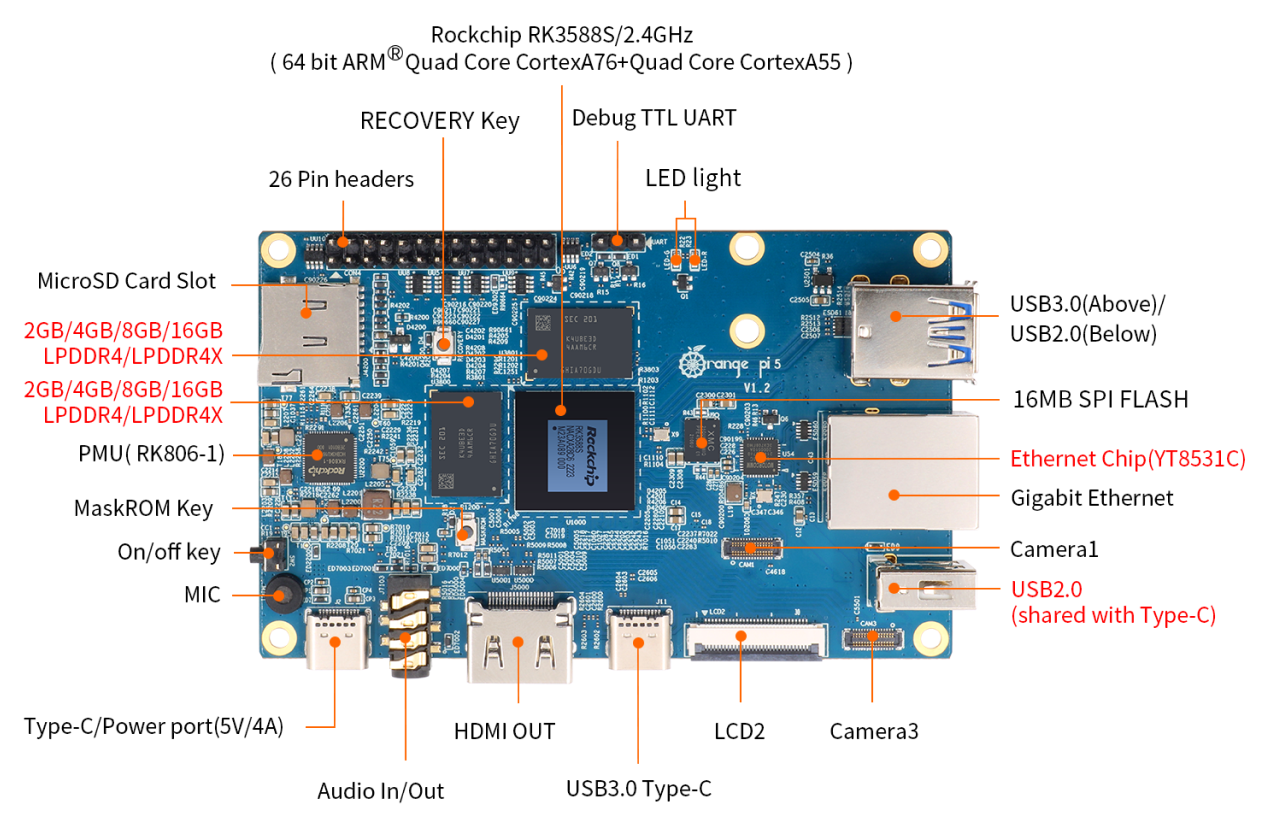OrangePi5 - The affordable alternative to RaspberryPi
How not to lose an arm and a leg when buying a mini-computer for your project.

What is OrangePi and why betray the holy Raspberry?!
OrangePi is a mini PC offering itself as the cheap, yet powerful, tool for personal projects. It is a direct competitor to the classic RaspberryPi, offering a wide range of capability in hardware. Leaving you to choose which to pick depending on your use-case.
So why switch from the classic? It is tried and tested. The documentation is all there. Why risk it? But the answer is simple… money.
The mission behind RaspberryPi was always noble and simple. Bring affordable hardware to people who want to learn more about computing and coding. Make it affordable. Make it cheap!
Unfortunately, through no fault of their own, their hardware has become anything but accessible in the recent years. With the pandemic chip shortages, the war in Ukraine, or the skyrocketing demand for home-working electronics, the prices of conductors and various parts has done nothing but go up. This naturally made it harder for Raspberry Pi to manufacture new units.
Finally, there is the last puzzle piece that also lead to hardware shortages… the opportunists! Where there is an item in demand, there are also people trying to profit. With that, individuals with the capital to do it, were able to buy multiple boards for a later resale. This obviously exacerbated the problem and left people like you and me looking for alternatives.
So, are there even any alternatives you may ask. Of course there are! One whackier than the next. Here is a notable shortlist, should you wish to do some research yourself:
- Potato Pi - a.k.a. “Libre Potato”
- Libre Renegade
- Odroid C4
- Banana Pi M5
- Rock Pi
Also consider watching this video from LTT, which explores the specs of multiple boards in great detail - https://youtu.be/uJvCVw1yONQ
Hardware highlights
Let’s talk hardware! As of today, OrangePi5 is one of the most powerful single board computers out there. Given its specs, the relatively low price, as well as recent electronics price hikes, it is a solid option. So what are some of the most important things to consider about this hardware?
- CPU is an 8-core 64bit processor available in 4GB, 8GB, 16GB, or even 32GB of RAM. The last (in my opinion) being a huge overkill for a single board computer.
- GPU is a Mali-G610 processor. This can support 8k video at 60fps. This is very powerful and great for running media servers.
- The GPU is also optimised for neural processing. This means it can handle machine learning and AI applications. This makes it ideal for image and speech recognition, as well as natural language processing.
- Has a Gigabit Ethernet port. However, it contains NO built-in wi-fi/bluetooth capability.
- Full sized HDMI connector.
- 3 camera input slots.
- Has an M.2 slot. Ideally for an SSD memory, or a combo wifi-bluetooth card. This is very important! We will discuss this next.
The M.2 slot kerfuffle
Orange Pi is not the first board to come out with an M.2 slot. Taken alone, it is an amazing feature that allows you to utilise something like an NVMe SSD with your board. This is much faster than the classic micro SD (also supported by OrangePi5), as well SSD being a lot more reliable over time. Unfortunately, this board does not support any wireless connectivity. Leaving you with an uncomfortable decision: on board storage, or wireless connectivity. The upside being that there are always external accessories for either option.
Software and community support
One of the biggest considerations for many people looking to utilise this new board will be the community and software support. Now, the board is relatively new. As such, it should be forgiven for not having as much documented use as its raspberry counterpart. Saying that, there is already a decent set of options for the OS you can be running on your device. This includes Armbian, Orange PI Android OS, Debian, Ubuntu, or even OpenWRT that is used for networking and connectivity.
Here is the full list of options - http://www.orangepi.org/html/hardWare/computerAndMicrocontrollers/service-and-support/Orange-pi-5.html
Let’s keep in mind that as more people try this board out, the support will only get better and better.
Is the Orange Pi right for me?
In my opinion this board is great for any use-case that will utilise computer vision, or any other graphically-intense project. In the past, I have worked on motion detectors and QR code readers. I can see how the powerful hardware in Orage Pi leans perfectly into that.
Saying that, do not be discouraged in using it for other projects. I myself own 2 orange boards. One of them serves me as a portable work station and it does so wonderfully! hahah Ultimately, your use-case determines everything. Match the requirements and your budget to the hardware. If you learn something on the way, all the better!
I look to post my incoming Orange Pi projects soon. I’ll catalogue them under OrangePi, so keep looking out for that.
Happy tinkering.